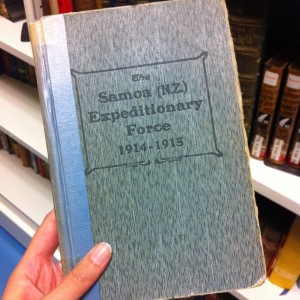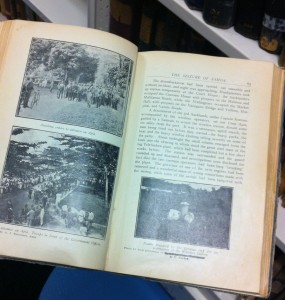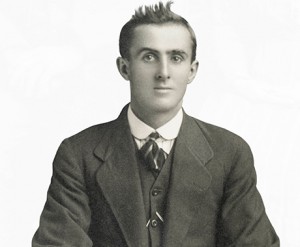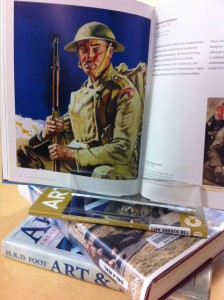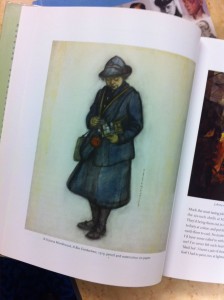On 29 August 1914, New Zealand troops arrived in Samoa and seized it from German control. This turned out to be a reasonably simple expedition but at the time it was regarded as potentially risky, with unknown consequences.
Samoa had been under German rule since 1900, but the presence of Germany in Samoa predates this. In 1855 Germany expanded its trading into the Pacific, initiating large-scale production of coconut, cacao and hevea rubber in Samoa (then known as the Navigator Islands). America and the United Kingdom also had business interests in the Pacific and opposed the German activity, which lead to the Second Samoan Civil War in 1899. Following this war, the Samoan islands were divided between the three opposing powers, with Germany being awarded what is today known as Western Samoa. It became regarded as the ‘jewel’ of German colonialism.
At the outbreak of war in 1914, Samoa was of moderate strategic importance to Germany. Using the radio transmitter located in the hills above Apia, German troops were able to send Morse code signals to Berlin, as well as communicate with the 90 warships in Germany’s naval fleet. Britain wanted this threat neutralised and New Zealand agreed to seize Samoa from Germany.

Officers attached to the New Zealand Expeditionary Force, Samoa. Tattersall, Alfred James, 1866-1951 :Photographs of Samoa. Ref: PAColl-3062-3-18. Alexander Turnbull Library, Wellington, New Zealand. http://natlib.govt.nz/records/23195986
New Zealand troops departed from Wellington on the morning of Saturday 15 August in two ships, Monowai and Moeraki. These two ships had been requisitioned from the Union Steam Ship Company as transports, and were therefore slow and unarmed. These two unlikely war ships left the New Zealand convoy extremely vulnerable as they travelled to Samoa, especially as the location of the German East Asia Squadron was unknown to the Allies throughout their two week journey.

S S Moeraki leaving Wellington. Dickie, John, 1869-1942 :Collection of postcards, prints and negatives. Ref: 1/1-002258-G. Alexander Turnbull Library, Wellington, New Zealand. http://natlib.govt.nz/records/22460165
When the New Zealand convoy reached French New Caledonia, they were joined by the Royal Australian Navy’s battlecruiser HMAS Australia, the light cruiser HMAS Melbourne and the French armoured cruiser Montcalm. While the landing at Gallipoli on 25 April 1915 is acknowledged as the birth of the Anzac legend, the first Australian–New Zealand military operation of the First World War was actually the capture of German Samoa in August 1914.

Tattersall, Alfred James, 1866-1951. New Zealand troops landing in Samoa during World War I. Making New Zealand :Negatives and prints from the Making New Zealand Centennial collection. Ref: MNZ-0366-1/4-F. Alexander Turnbull Library, Wellington, New Zealand. http://natlib.govt.nz/records/22716395
Upon reaching Samoa, it became known to the New Zealand convoy that the German defences there were in fact quite weak; they had only 20 troops and special constables armed with 50 aging rifles. The Samoa Advance Party of the New Zealand Expeditionary Force landed at Apia on 29 August with no opposition. It was later discovered that the German administration had received orders from Berlin not to oppose an Allied invasion.

Part of camp, Malifa, Western Samoa. Hackworth, Philip Vernon, d 1960 :Photograph album. Ref: PA1-q-107-36-2. Alexander Turnbull Library, Wellington, New Zealand. http://natlib.govt.nz/records/22806414
A fortnight later, on 14 September, the Scharnhorst and Gneisenau arrived off Apia and the New Zealand garrison braced itself for large-calibre gunfire. Luckily, the cruisers left once their skippers realised that Samoa was no longer in German hands. Samoa was then declared to be under a New Zealand-run British military occupation. The British flag was raised outside the government building in Apia and Samoa became the second German territory, after Togoland in Africa, to fall to the Allies in the First World War.
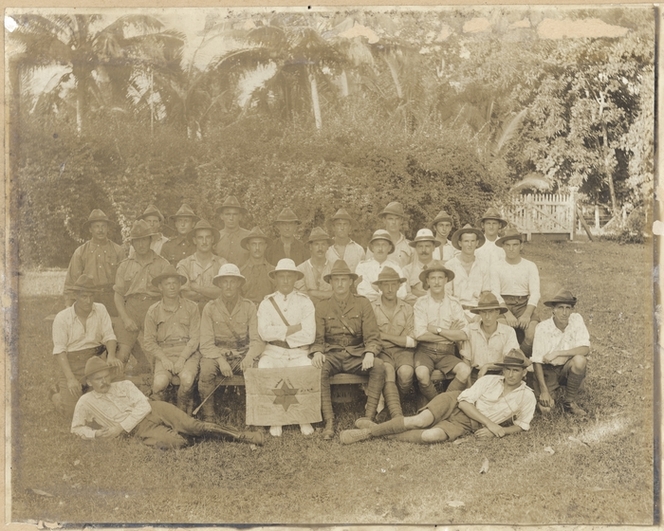
Star Boating Club :Photograph of members of the club who went to Samoa with Expeditionary Force, 1914.. Ref: PAColl-5216. Alexander Turnbull Library, Wellington, New Zealand. http://natlib.govt.nz/records/22348195
If you would like to learn more about New Zealand in German Samoa, we have some materials available:
 Fighting for empire: New Zealand and the Great War of 1914-1918 / Christopher Pugsley.
Fighting for empire: New Zealand and the Great War of 1914-1918 / Christopher Pugsley.
“One hundred thousand New Zealanders sailed to war between 1914 and 1918, and at the end of four years of conflict the country had suffered 60,000 casualties, including 18,000 dead. Dr Chris Pugsley’s account of the First World War (first published as a section in Scars on the Heart: 200 Years of NZ at War, Bateman, 1996), is a tale of learning about war the hard way, by bitter and costly experience, drawing on photographs, letters and diaries to examine the impact of war through the eyes of those involved. This lively mix of text, photographs and soldiers’ own accounts covers all aspects of the war: from NZ’s seizing German Samoa five days after war was declared, ANZAC Cove and Gallipoli, patriotism at home, Mounted Rifles in Sinai and Palestine, the role of our nurses, the Western Front, and ‘Sea Dogs and Flying Aces – how our sailors and airmen fought the war’.” (Syndetics summary)
THE SAMOA (N.Z.) EXPEDITIONARY FORCE
We have this book in our New Zealand Rare books collection. Published in 1924, it is in a fragile condition but may be viewed by request at the 2nd floor enquiries desk.
Information sourced from NZ History and Wikipedia
Images sourced from Timeframes


